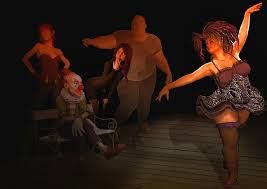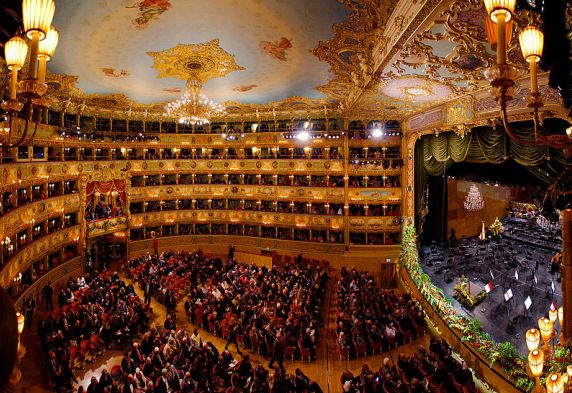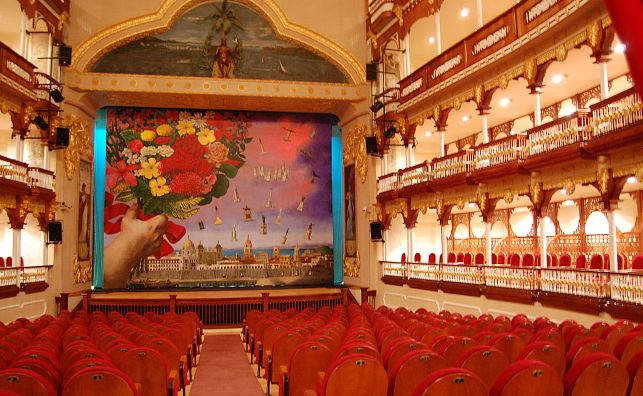Theater in the Modern Age – Concept, Characteristics and Development
Contents
What is the Theater of the Modern Age?
Theater in the modern age was a product of the theatrical events of the 19th century and in many cases, was inspired by the social upheavals that followed the French Revolution. Throughout Europe the bourgeoisie took control of the theaters and made changes in repertoire, style and decoration. In countries that experienced revolutionary change and failure, national theaters were founded to give expression to the views and values of the bourgeoisie, whose aspirations in these cases coincided with a more general movement for national liberation.
In Western Europe a different pattern of development emerged, differing considerably from country to country. However, the theater of the modern age is going to have the unified characteristics of a demand for realism on the stage, which is a faithful reflection of the way of life and domestic environment of the class uprising in its tragic and its comic aspects. So, coupled with this development was the demand for greater decoration and cleanliness in the auditorium.
In England, where the Industrial Revolution was more advanced than in other European countries, the middle class struggled for its own theater against the entrenched power of the two patent houses (licensed by the crown), Drury Lane and Covent Garden, which had enjoyed an almost total monopoly of dramatic theater since 1660. As early as 1789, attempts were made to evade legal restrictions on the construction of new theaters.
How did the Theatre of the Modern Age develop?
The Reform Bill of 1832, led to the Theatres Act of 1843, which gave London a free theater. So the expected flood of new theater buildings did not occur, and no major building was constructed for 16 years. This was probably because there were already enough illegal theaters in operation when the law was passed.
Paris boulevard theaters experienced fewer difficulties in establishing themselves. The rise of the middle-class theaters caused the decline of both patent houses in London and the Comédie-Française, the National Theater of France. After much political struggle, centered mainly around censorship, the Comédie-Française, unable to compete with the boulevard theaters, capitulated and presented the works of the new school for new audiences.
During the 19th century, cities in Europe and North America increased in size and industrial centers and attracted labor for their factories and mills. The working-class suburbs of cities and industrial towns thus created their own demand for entertainment, which led to the construction of large theaters. Thus, the modern theater began around 1885 with the revolt of young people against the material injustice of society.
In this revolt they founded the so-called independent theaters to present a more critical and scientific view on the functioning of society, calling for art theaters to rise above vulgar materialism by setting aesthetic standards. The independent theaters took the Meiningen actors as a starting point. Thus, art theaters looked to Wagner for inspiration.
The New Naturalism
The first of the independent theaters was the Théâtre Libre (“free theater”) founded in 1887 by André Antoine, who made his living as an employee of the Paris gas company. The free theater was an amateur theater with no home of its own. It hired halls and theaters where there was availability and sold tickets for its performances to a closed membership, thus avoiding censorship. Thus, Antoine’s original intention was to present acts that had been rejected by French comedy, so the repertoire was eclectic.
Therefore, the greatest impact the group made was with a number of naturalistic plays. Theater was at that time lagging behind literature, and, although Émile Zola had written an essay entitled “Naturalism in the Theater” in 1881, he produced what is known as the first naturalistic play.
Now, in the wake of the scientific advances and philosophical skepticism of the nineteenth century, the social reformers of the last two decades of the century, probing into the causes of human behavior, postulated that the meaning of human character was to be found in its interaction with the physical, social and economic environment. Therefore, the new theater demanded “truth” not only in writing, but also in acting.
Thus, actors were to ignore the audience, behave and speak as if they were at home. Antoine is usually credited for being the first to need to be an actor to turn his back on the audience. Thus, from this style of acting came the concept of the “fourth wall” that separates the stage from the audience. Behind this “wall”, invisible to the audience, opaque to the actors, the environment portrayed had to be as authentic as possible. Therefore, Antoine designed rooms and decided on the wall that would be “eliminated”. Similarly, in the butcher’s scene, he hung animal carcasses on the stage.
What are the types of theater of the modern age?
 The Theater of Cruelty in the Theater of the Modern Age
The Theater of Cruelty in the Theater of the Modern Age
Originated in France in the 1930s. Developed by Antonin Artaud (1896-1948). This theater was created as a revolt against realist theater. Antonin believed that the senses of the spectators should be bombarded. Thus, this idea is based on magic and ritual that would evoke violent and erotic impulses.
Therefore, by arranging the theater space, the author was doing it so that the audience would be the center of attention, however, he spent most of his life in mental institutions and published only one act, the jet of blood, in 1925.
The Epic Theater in the theater of the Modern Age
This theater of the modern age was developed by Bertolt Brecht (1898-1956) and his theories influenced many contemporary playwrights and directors. Thus, it was a token of theater aimed at the intellect, rather than the emotions to affect social change. The act was episodic in nature, covered a large amount of time and changed locations frequently.
They also had complex passages and large casts. Thus, the goal of epic theater is to instruct. Likewise, the audience was always to remain emotionally detached and alienated by the performance on stage, so, the audience was always to know that they were in a theater.
Existentialism in the theater of the Modern Age
This idea of this theater of the modern age was initiated by Jean-Paul Sartre (1905-1980) and Albert Camus (1913-1960). Likewise, the existentialist believes that existence has little meaning, that God does not exist, that humanity is alone in an irrational universe and that the only thing a person can do is to accept his actions with responsibility.
The Theater of the Absurd in the theater of the Modern Age
This theater was created by a small disorganized movement in the 1950s and 1960s. These playwrights of the absurd believe that existence is futile and meaningless nothing seems to happen in the act and the plot moves in circles, there is no climactic action or episodic plot and the characters are not realistic they are sometimes unrecognizable, the language is sparse and the characters unable to communicate effectively.
Who were the main representatives of theater in the modern age?
André Antoine’s commitment to naturalism may have been underestimated since much of his repertory was not naturalistic and the descriptions of several of the performances of the free theater show imaginative experimentation with lighting effects that went beyond creating realistic temporal and atmospheric conditions. The first production of the free theater had no scenery at all, only a few pieces of furniture borrowed from Antoine’s mother, but it was this production that defined the naturalistic style.
For his part, Zola, the philosopher of the movement, deplored the fact that naturalistic theater began by creating an external representation of the world rather than concentrating on the internal state of the characters. Similarly, Strindberg demonstrated that some carefully selected properties could suggest an entire room.
Thus, with Antoine and Strindberg’s ideas, the days of swinging doors, kitchen shelves painted on set walls became numbered. The more detailed and natural the act the more it clashed and clashed with the painted background. Thus, Antoine’s innovations of completeness did much to establish the principle that each act requires its own distinct setting.
Thus, in 1906, as director of the state subsidy of the Odéon theater, classical plays were produced in which he strove for realism through period decor and costumes by attempting to recreate theatrical conventions of the 1600s.


 The Theater of Cruelty in the Theater of the Modern Age
The Theater of Cruelty in the Theater of the Modern Age